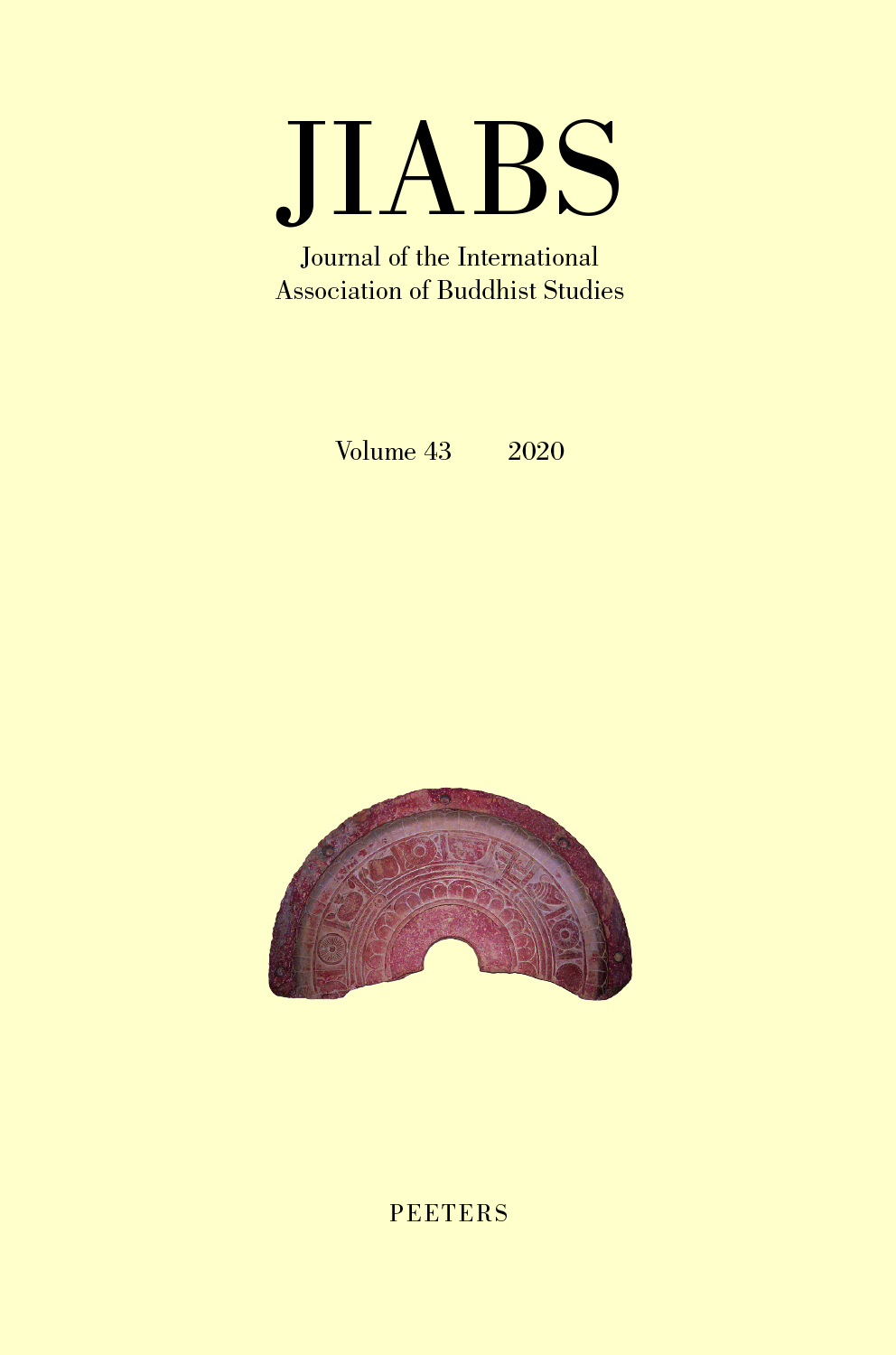 previous article in this issue previous article in this issue | next article in this issue  |

Preview first page |
Document Details : Title: Buddha in the Storehouse Subtitle: Mi bskyod rdo rje on the Relationship between tathāgatagarbha and ālayavijñāna Author(s): HIGGINS, David Journal: Journal of the International Association of Buddhist Studies Volume: 42 Date: 2019 Pages: 169-230 DOI: 10.2143/JIABS.42.0.3287479 Abstract : This paper addresses the age-old question of how buddha nature (tathāgatagarbha) relates to Yogācāra psychology, focusing on the Eighth Karma pa Mi bskyod rdo rje’s (1507-1554) responses to this question. In the centuries following the first appearance of tathāgatagarbha doctrines in India (circa 2nd c. CE), opinions became divided over whether buddha nature should be identified with or distinguished from the Yogācāra idea of a substratum consciousness (ālayavijñāna). The topic attracted a great deal of discussion and debate among Buddhist scholars, both within and beyond the borders of India. At stake were a set of specific doctrinal issues as to whether and how the Yogācāra ālayavijñāna-vāsanā model could be reconciled with [1] buddha nature theory [2] tantric buddha nature proxies such as the unconditioned ground (gzhi) and causal continuum (rgyu rgyud) [3] Indian and Chinese Buddhist conceptions of an immaculate consciousness (amalavijñāna) and [4] certain anti-foundationalist strains of Middle Way (Madhyamaka) philosophy that rejected any transcendental basis of consciousness. The Karma pa’s repeated forays into these contested subject areas reveal time and again his commitment to reconcile two contrasting lines of Buddhist thought and praxis: [1] the affirmative appraisal of the nature of mind and reality emphasized in Yogācāra and tathāgatagarbha classics, the tantras, and the songs and writings of the Buddhist mahāsiddhas and [2] the metaphysically disinclined stance of the Middle Way (Madhyamaka) philosophy that avoided extremes of affirmation and denial, existence and nonexistence. To adequately appreciate his contributions to such issues, I will first sketch in rough strokes the historical evolution of the ālayavijñāna doctrine and its complex confrontations with tathāgatagarbha doctrine in India. Against this backdrop, attention will turn to the Karma pa’s contextualist framing of the ālayavijñāna-tathāgatagarbha relationship in terms of a progressive understanding that begins with differentiation and culminates in unity. His is a view that stresses the need to initially distinguish between conditions of spiritual awakening (such as tathāgatagarbha) and delusion (such as ālayavijñāna) in order to eventually realize their underlying unity (zung ’jug) by recognizing buddha nature as an ever-present continuum (rgyud) of awareness that is a precondition of the substratum consciousness that derives and deviates from it. In his attempts to strike a balance between traditional differentiation and unity models, we encounter a thinker who was as confident about the mind’s ability to discover its own unborn and nonconceptual nature as he was skeptical about its ability to discover any underlying metaphysical foundation. |
 |


